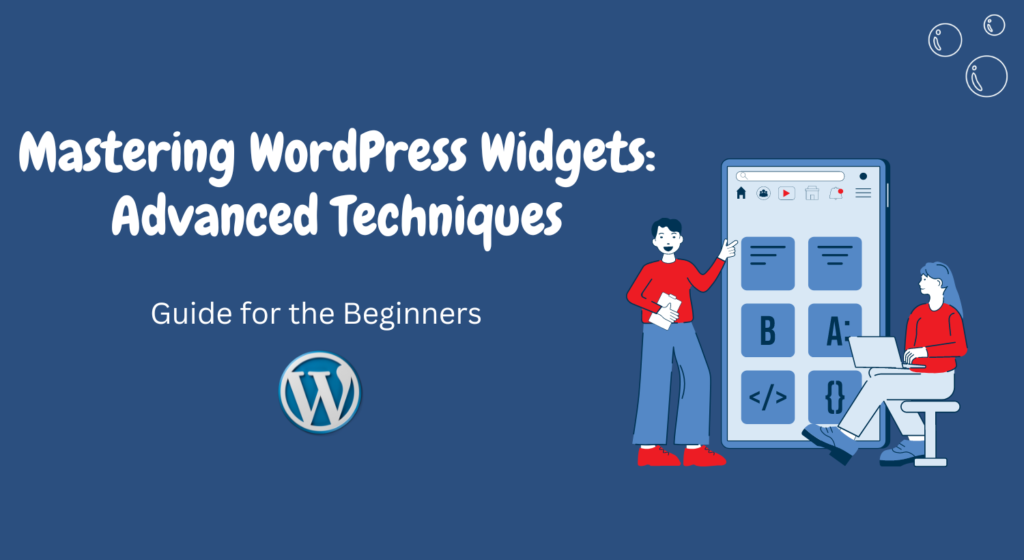Are you ready to take your WordPress website to the next level?
Widgets are an essential part of any WordPress site, offering a range of functionalities that enhance user experience and boost your site’s performance.
In this article, we’ll delve into advanced techniques for mastering WordPress widgets that will help you create a more engaging and interactive website.
From customizing widget areas to utilizing third-party widgets, we’ve got you covered. Let’s dive in!
Table of Contents
- Introduction
- Understanding Widget Areas
- Customizing Default Widgets
- Exploring Third-Party Widgets
- Creating Custom Widgets
- Optimizing Widgets for SEO
- Enhancing User Experience
- Monitoring Widget Performance
- Responsive Widget Design
- Integrating Widgets with Social Media
- Security Measures for Widgets
- Troubleshooting Widget Issues
- Future Trends in Widget Development
- Conclusion
Introduction
Widgets are powerful tools in WordPress that enable you to add various features and content blocks to your website’s sidebar, footer, or other widget-ready areas.
Mastering the use of widgets allows you to create a dynamic and engaging site that keeps visitors coming back for more.
Understanding Widget Areas
Before diving into advanced techniques, it’s crucial to understand the concept of widget areas.
Widget areas are predefined sections of your website’s layout where you can place widgets.
These areas can vary depending on your chosen theme, but common locations include the sidebar, footer, and header.
Customizing Default Widgets
WordPress comes with a range of default widgets, such as categories, recent posts, and search bars. Advanced users can customize these widgets to match their site’s branding and style.
Changing color schemes, fonts, and layouts will give your widgets a unique look and feel that seamlessly integrates with your site’s design.
Exploring Third-Party Widgets
Extend the functionality of your site by exploring third-party widgets.
These widgets, often developed by plugin creators, offer specialized features like social media feeds, e-commerce integrations, and event calendars.
Carefully select widgets that align with your site’s goals and user expectations.
Creating Custom Widgets
For those seeking ultimate control over their website’s appearance and functionality, creating custom widgets is the way to go.
With a bit of coding knowledge, you can develop widgets tailored to your specific needs.
This opens up a world of possibilities, from interactive image galleries to advanced contact forms.
Optimizing Widgets for SEO
Widgets can play a role in SEO optimization by providing additional content and interactivity.
Ensure that your widgets are relevant to your site’s content and keywords.
Avoid overloading your site with widgets, as this can negatively impact page load times and user experience.
Enhancing User Experience
User experience should be at the forefront of your widget strategy.
Consider the placement of widgets to guide visitors through your site naturally.
Use widgets to highlight popular content, guide users to important pages, and encourage interaction.
Monitoring Widget Performance
Regularly assess how your widgets are performing. Are they contributing to your site’s goals?
Use tools like Google Analytics to track engagement and conversion rates associated with specific widgets.
Adjust or remove underperforming widgets to optimize your site’s overall performance.
Responsive Widget Design
In today’s mobile-centric world, responsive design is paramount.
Ensure that your widgets adapt seamlessly to various screen sizes and orientations.
A responsive design guarantees a consistent and enjoyable experience for all users, regardless of the device they’re using.
Integrating Widgets with Social Media
Harness the power of social media by integrating widgets that display your social media feeds.
This keeps your website updated with the latest social content, encouraging visitors to engage with your online presence beyond your website.
Security Measures for Widgets
Widgets can sometimes pose security risks, especially if they’re from untrusted sources.
Regularly update your widgets and the plugins that power them.
Stick to reputable sources and avoid installing widgets that require extensive permissions.
Troubleshooting Widget Issues
Encountering issues with your widgets? Don’t panic.
Start by deactivating plugins one by one to identify any conflicts.
Check for compatibility issues between widgets and themes. If all else fails, consult relevant online communities or professionals for assistance.
Future Trends in Widget Development
The world of web development is ever-evolving, and widgets are no exception.
Keep an eye on emerging trends, such as voice-activated widgets and AI-powered customization.
Staying ahead of the curve will ensure your website remains cutting-edge.
Conclusion
Mastering WordPress widgets empowers you to create a website that stands out from the crowd.
By understanding widget areas, customizing default and third-party widgets, and exploring advanced techniques, you’ll be able to enhance user experience, optimize for SEO, and achieve your site’s goals.
Embrace the power of widgets and unlock the full potential of your WordPress website.
FAQs
What are widgets in WordPress?
Widgets are small blocks of content or features that can be added to specific areas of a WordPress website, such as the sidebar or footer.
Can I create my own custom widgets?
Yes, advanced users with coding skills can create custom widgets tailored to their site’s unique needs.
Are widgets mobile-friendly?
Absolutely, it’s crucial to ensure that widgets are responsive and adapt well to different screen sizes for an optimal user experience.
How do widgets affect my site’s performance?
Widgets can impact page load times, so it’s essential to choose and monitor them carefully to avoid a negative impact on performance.
Where can I find reliable third-party widgets?
You can find third-party widgets in the WordPress plugin repository or from reputable plugin developers.


